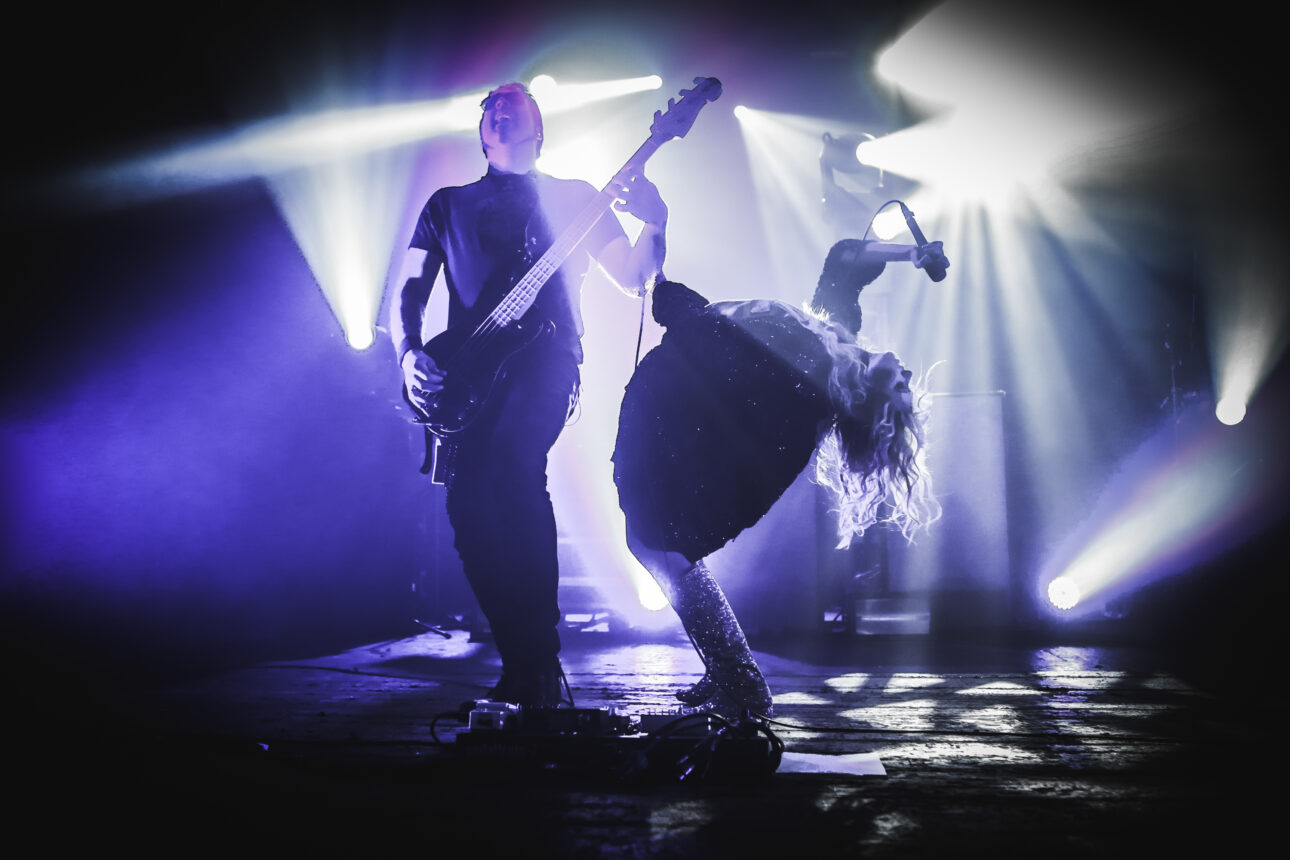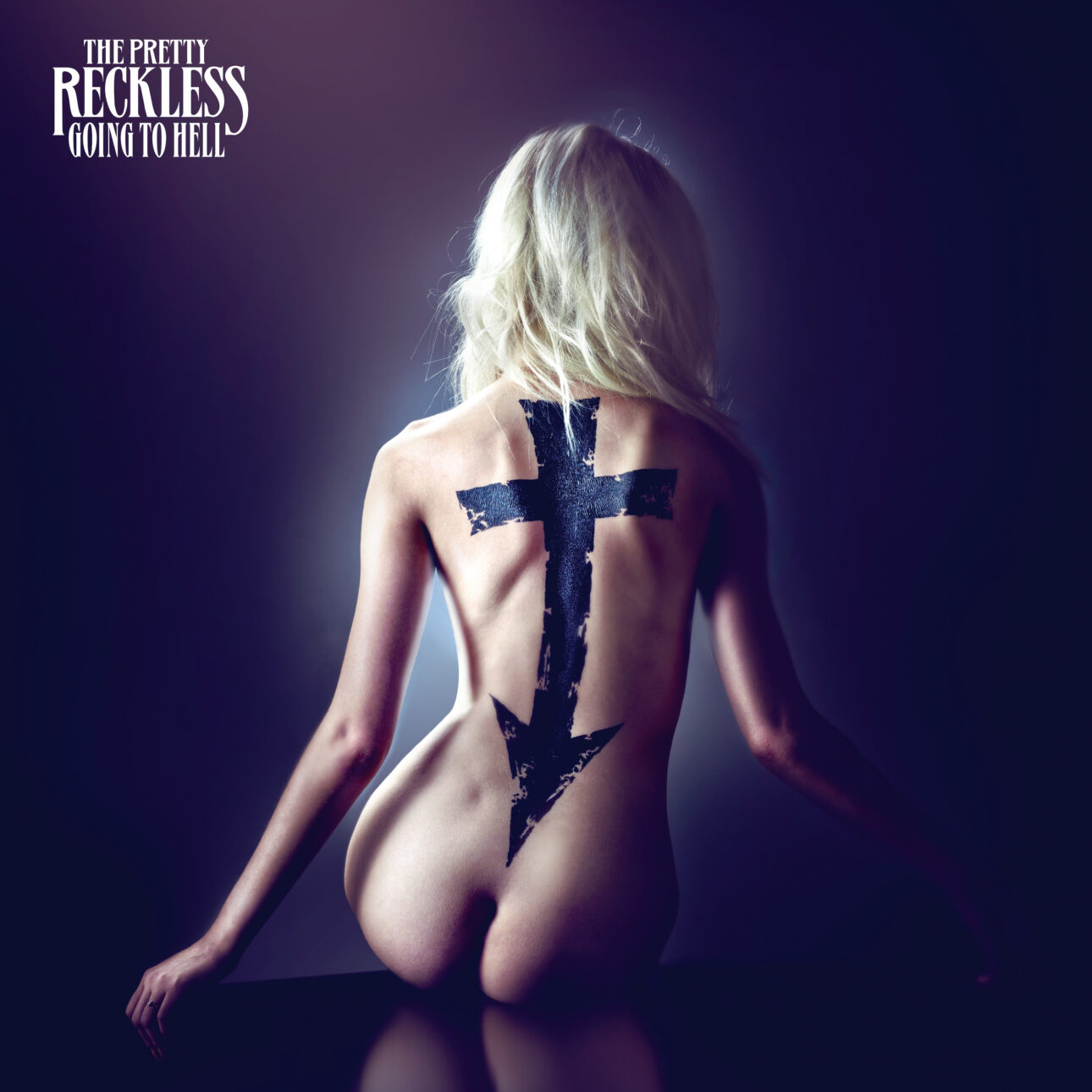It was the best of times, it was the worst of times—the making of The Pretty Reckless’s Going to Hell, that is. As the band’s second studio album celebrates its 10-year anniversary, frontwoman Taylor Momsen and guitarist Ben Phillips recall the epic and often heartbreaking journey of its creation—and surprising success, against the odds. “I think that it’s a story of triumph in a lot of ways,” Taylor says. “To see it become so successful when that wasn’t the intention is a little surreal, to say the least.”
The triumph part is easy. Four years after their studio debut Light Me Up (“Make Me Wanna Die” its hit lead single) established them as a band of definitive talent, The Pretty Reckless set out to create an album that reflected their shared love for the same fiery sound—with zero interest in topping anyone’s charts. The result was Going to Hell, an album best described in any room as unapologetic. Untamed and gut-wrenching also apply, as well as thoughtful, deliberate, and empowering—showcased by Taylor’s fierce and flawless voice, one perfectly suited for hard rock ‘n roll.
For perspective, in 2014 the Frozen soundtrack boasted the longest-running No. 1 album, with Pharrell Williams’ sticky, bop-along “Happy” Billboard’s No. 1 song of the year. And then here comes Going to Hell, flame-throwing itself onto Billboard’s No. 5 spot upon its release. “We melted Frozen,” Ben remarks, and he and Taylor break out in laughter.

Clearly, the intention wasn’t to create a commercial album, and Ben goes so far as to recall when he and producer Kato Khandwala first met Taylor and how authentically “non-commercial” she was.
“She wanted to be Chris Cornell, and she didn’t care about anything else,” Ben says. “We don’t even know what a hit is in this band.”
As Ben recalls, Taylor and Kato met first, and it was established that Taylor “didn’t want to write songs for the record label or for [an] audience or for the whatever. She had songs that she wanted to write, and that meant that you had to be an artist about it. No one ever hears our records till they’re mastered and finished. That’s the first thing. No one. We’re not looking at the radio, we’re not looking at anything. We just create in the studio.” The 15/16-year-old Taylor that ignited Light Me Up wasn’t the same as the 18/19-year-old Taylor behind Going to Hell. “She’d stepped into maturity,” Ben says.
Going to Hell started with the best of intentions. Gone were the “childish pretensions” and “a whole mess of music industry stuff we weren’t expecting” of their studio debut, according to Ben. Kato had put together a new studio for them—Hoboken, New Jersey’s Water Music Recording Studio—and they “worked on songs as they came, in a vacuum making our music and not knowing what anyone else was doing,” Ben says. Also present were bandmates Mark Damon on bass and Jamie Perkins on drums. Working as a unified, creative force, these were the best of times. But then, in October of 2012, Hurricane Sandy came and destroyed the studio. They relocated to Lake Hopatcong (also in New Jersey) to finish up.
“There’s no songs on this for radio or anything,” Ben thought, at the time, and they were happy with what they believed to be an honest, authentically non-commercial album. Taylor agreed, definitively, remembering: “This is not a hit record.”

Ben refers to the album as a “dark record about Taylor removing herself from her childhood, growing out of her upbringing…identifying with all her childhood mistakes and everything that she had done.” Aside from its obvious dark themes, the album was written in actual darkness, during the 2012 NYC blackout, Taylor sitting in her apartment surrounded by candles. “I was sitting in the freezing cold writing ‘Going to Hell,’ Taylor says, of the single that eventually became the theme of the entire project. Though they initially wanted “Going to Hell” to be the album’s first single, they went with “Heaven Knows,” released on November 13, 2013, and it would become the band’s first No. 1 on Billboard’s Mainstream Rock Songs chart. “Messed Up World (F’d Up World)” and “Follow Me Down” followed in chart-topping suit.
No one was more surprised than The Pretty Reckless. “We never had any radio [play] in America, so we didn’t even think that was a possibility,” Ben says. They clearly struck an unexpected chord. A “heavy and dark” chord at that, according to Taylor. Going to Hell was already a hit.
Taylor and Ben attribute the artistic and unanticipated commercial success of Going to Hell to being a cohesive unit.
“Possibilities were endless… musically we were on the same page,” Taylor says. This, of course, included Kato who, according to both of them, was at his creative height on Going to Hell. Aside from Hurricane Sandy drowning their studio in six feet of sewage, and, in Taylor’s words other “devastating outside forces” during the making of the album, Kato’s wife Lisa passed away at the end of the year. It was Lisa who’d come into the studio with Q-Tips and, as Ben recalls, “cleaned every guitar from screw to screw for us, bringing them all back to life.” Going to Hell is dedicated to Lisa.
This devastating loss signaled a definite shift. In an attempt to help Kato through the tragedy of Lisa’s passing, they brought him back into the studio to work on the last single, “Messed Up World (F’d Up World),” a song that Taylor says “sums up the whole thing.” Kato, their cherished collaborator who Ben referred to as “our best friend,” died in 2018 as the result of a motorcycle accident.
As Ben says, losing Kato meant trying to navigate future projects without him, moving forward: “We had to rebuild and figure out how we were going to do this without him.”
Taylor adds: “[Kato was] a conduit for our songwriting and our creativity. He got inside what Ben and I were writing and helped to make that vision come to life in a really deep and involved way.” Going to Hell, she continues, “changed our lives. Even though we maybe didn’t see it at the time, we certainly are feeling the effects of it to this day. First, it made us double down on our ethics. It gave us the confidence to go, ‘We’re doing the right thing by doing it this way,’ and continued us on the path that we’re still on.”
“It’s ups and downs, but…that’s life,” Ben says.
“That’s the life,” Taylor says. “It’s a perpetual, lifelong sacrifice to be a songwriter and to be true to yourself.”

From his 125th Street Harlem studio, photographer Danny Hastings, best known for his legendary hip-hop album covers (Enter the Wu-Tang: 36 Chambers, Eminem’s Slim Shady special edition, among others), shot a naked and painted Taylor over the course of 16 hours.
Determined to preserve authenticity, and inspired by the classics, Taylor and team were committed to capturing the Going to Hell cover image in its entirety on camera. That meant, the now-famed downward-pointing arrow/cross was painted on Taylor on site, a task that took time, but was well worth it, in the spirit of iconic covers of the past. As Taylor explains, the idea came from the famous 1996 Pink Floyd promo poster shot by Tony May featuring six naked women sitting by a pool, their backs painted with the band’s cover art. (Eric Clapton’s E.C. Was Here and Pink Floyd’s Wish You Were Here, where a man was actually lit on fire, served as further inspiration.)
“It’s kind of a homage to love, with a new take on it,” Taylor explains. “Because the cross was something that I had drawn myself and come up with. I was like, ‘This is the physical representation of this record to me, this is the symbol.’” Visuals, she says, come naturally to her, “especially when making music.” (She says she sees music visually, too.)
“I was drawing [the cross] while we were recording the record, and I was like, “Well, this is the logo, this is the symbol for this record and so let’s put it on my back and use sensuality and sexuality.”

The artist hired to apply the graphic on Taylor was familiar with the band, but not Taylor and her former acting career — in the beginning. “As he was painting my nipples very detailed and it’s specifically my nipple…that’s what’s funny about this…he’s leaning in…creating every little speck and dot perfectly. He puts together that I was Cindy Lou Who [in 2000’s How the Grinch Stole Christmas], and this guy drops his paintbrush, starts spinning around the room, screaming, going, ‘I can’t believe I’m painting Cindy Lou Who!’” Taylor says. It provided some “much-needed comic relief [for] this very serious project.”
As to not distract from the music, Taylor’s face is intentionally not shown. They thought of every detail, including the redness under the right elbow. “It’s getting scorched by flames you can’t see as I’m reaching down to hell, being tugged,” Taylor says.
To achieve the final image—Taylor’s body curved just so, arms forward in gentle balletic motion—the inky graphic had to be painted perfectly and, according to Ben, she had to angle her body a certain way, to achieve, in Taylor’s words, “a piece of art.”
The result is an astute personality test for any onlooker: Is the woman in the picture actually going to hell – or emerging from it?
“This is me as pure and raw as it can get,” Taylor says. “Kind of how I feel about this album.”





